Barbara Yates' Mobile Artist Musings
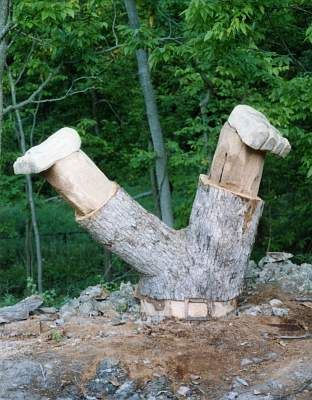
RECYCLING DEAD TREES INTO ART FOR PARKS
I am am environmental artist who recycles dead trees into art for parks. My first recycling project was to carve a two-ton oak into a Shrine to the Rainforests for the Treepeople Park at the top of Beverly Hills in California. That was when I taught myself how to carve with an electric chainsaw.

The next recycling project was for the Avondale Forest Park in County Wicklow, Ireland. With a one-inch chisel I carved a mural sixteen feet long and five feet high into the 42-ton beech tree that had been planted around 1750 and had died of old age. Even though the park had cut it down it was still ten feet tall; the project took me two months.
In 2004 I moved to Loveland, Ohio to be artist in residence for Grailville, a women's retreat center, where I've been recycling dead trees into art that can be found scattered around their grounds. While there, I took my portfolio around to several parks and although park officials were interested they all said that they had no extra funds to hire me.
But, several weeks after I showed my portfolio to Bob Harris, the Director of Glenwood Gardens, he aksed me to come out to the park. A big old tree had come down in a windstorm and they wanted to know if there was anything I could do with it.
I was a bit overwhelmed at the size of the project. A massively huge pin oak, hollow at the bottom, had been blown down taking out two large hackberry trees with it. The base of the pin oak was more than 6 feet in diameter and it had been at least 70 to 80 feet tall. The two hackberry trees, joined at the base, were only 18 inches in diameter and had been around 60 feet tall. The trees had been standing at the edge of a children's park called Highfield Discovery Garden, which had just opened the previous July.
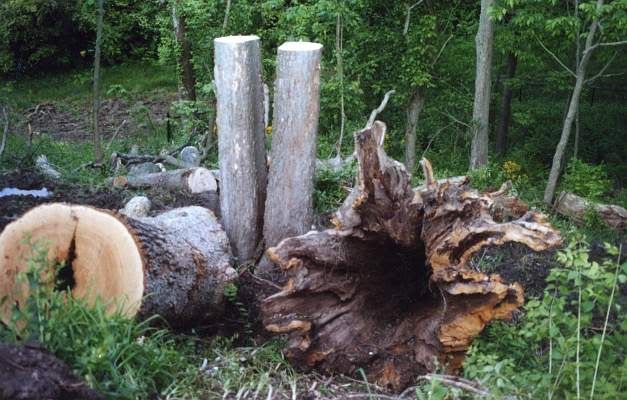
I spent the weekend thinking about what I would do to recycle these trees into art for the park and Sunday evening e-mailed my proposal to Bob. Monday afternoon I received a call from Tim Zelek, the planner for the Hamilton County Parks; they loved my ideas and were going to find the money needed to go ahead with the project.
The park had to hire a big tree cutting company, Back Trees, run by Tim Back, to cut the wood into the sizes I needed for the various pieces and to move them to their new homes for display on the steep hill below the park. The boardwalks surrounding the edges of the park, including a swinging bridge, provide perfect viewpoints to see the sculptures below.
Because the oak was so large and mostly hollow, I decided to carve murals on two fifteen-foot long, four-foot high pieces. One was carved with a lucky Chinese dragon and the other has a scene with a doe, fawn, raccoon and possum. The ten-foot tall base of the treewas turned upside down to be carved into an elf house with door, windows and a mountain lion running across the roots.

The crotch of the oak has been set on the ground and I carved large feet for it so it's now a troll buried up to its waist, with only its legs and feet sticking out. One thinner branch of the oak has become the long neck and head of Nessie, the Loch Ness monster; a curved branch of the oak has become Nessie's hump. A thick slab from the pin oak sits above in the park to show that it was around 300 years old when it came down. A lump on it has been carved into a bear's head. Two large gnarly hollow pieces will be moved up to the park to be made into planters.
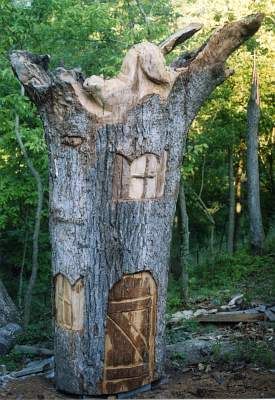
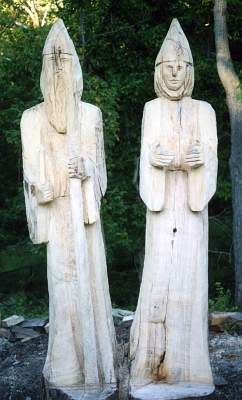
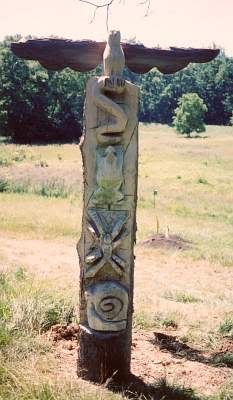

The hackberry trees have been turned into two nine-foot tall totem poles with animals that can be recognized so that the naturalists can use them as teaching tools, two ten-foot tall wizards (male and female), an elf, a squirrel, the feet of the troll, and various small animals. I discovered that if I could cut the branches even to be legs, turn it upside down and carve a head on top to make an earthspirit.

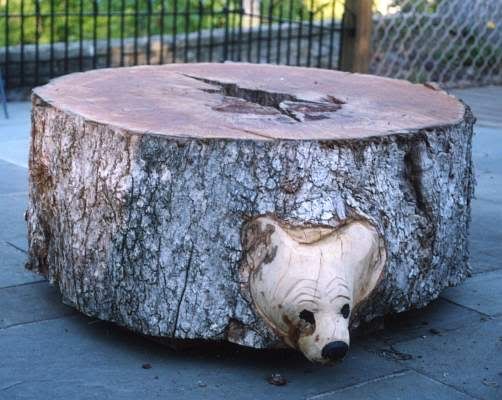 .
.Now called the Wizard's Garden it took me 120 hours over eight weeks in unbelievable heat to complete.

